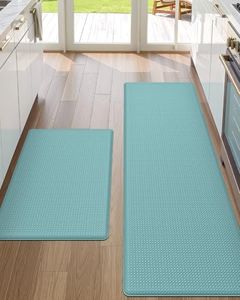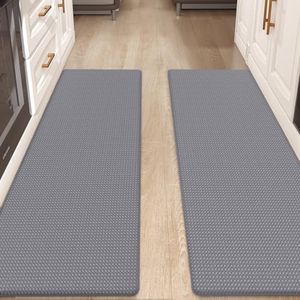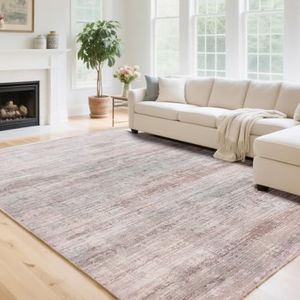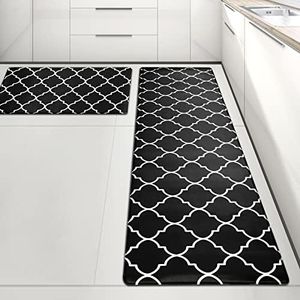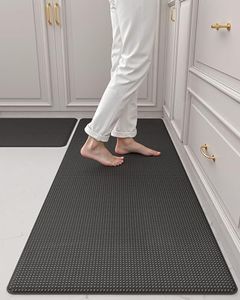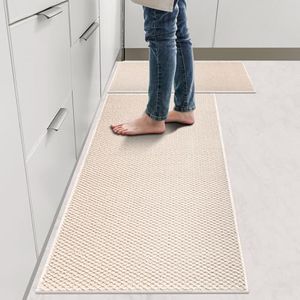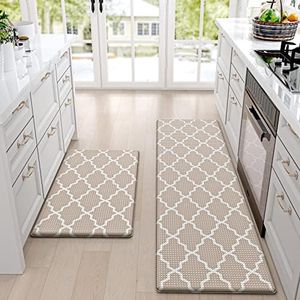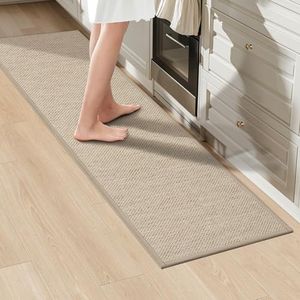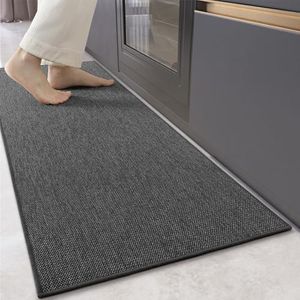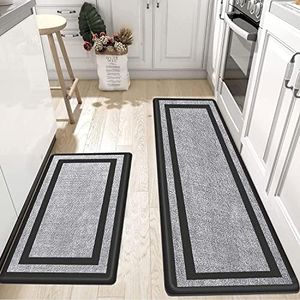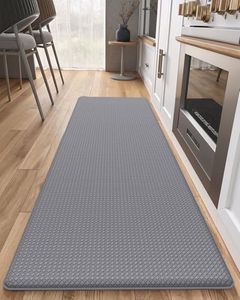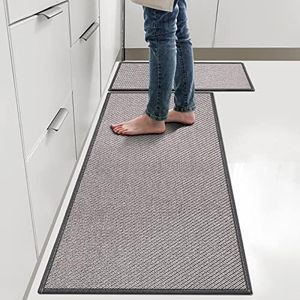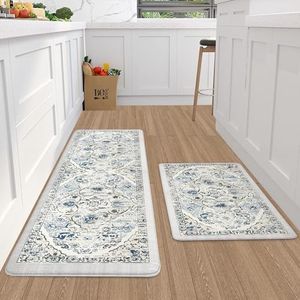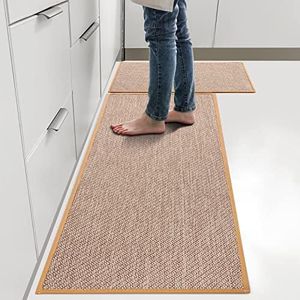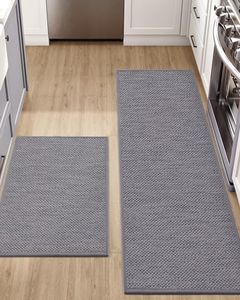We Use CookiesWe use cookies to enhance the security, performance,
functionality and for analytical and promotional activities. By continuing to browse this site you
are agreeing to our privacy policy
10 Best Kitchen Rugs
From leading brands and best sellers available on the web.Buying Guide for the Best Kitchen Rugs
Choosing the right kitchen rug is about balancing comfort, durability, safety, and style for your space. Kitchen rugs can make your cooking area more welcoming, help reduce fatigue if you stand for long periods, and can protect your floors from spills and stains. Before picking one, consider where exactly in your kitchen you want the rug, what you do most often in that area, and how much maintenance you're comfortable handling.MaterialThe material of a kitchen rug determines how soft, durable, and easy it is to clean. Common options include cotton, synthetic fibers (like polypropylene or nylon), and natural fibers (like jute or bamboo). Cotton rugs are soft and often washable, making them great for spots where you might want to throw them in the washer. Synthetic fibers tend to be easy to clean, stain-resistant, and durable, ideal for high-traffic and spill-prone areas. Natural fibers are more eco-friendly but might be less forgiving with spills. Consider what feels comfortable underfoot and how much traffic and mess the rug will need to handle in your kitchen.
Size and ShapeThe size and shape of your rug should fit the purpose and location in your kitchen. Small mats can work in front of sinks or stoves, runners are great for long, narrow spaces, and larger area rugs can define larger eating or prep areas. When picking a size, think about whether you want just a small accent, or something that covers a busy area. Make sure the rug doesn’t cause tripping hazards and that doors can open freely over it.
Backing/Non-slip FeatureA rug’s backing is what keeps it from sliding around on kitchen floors, which is essential for safety. Some rugs come with a non-slip or rubberized backing, while others might need a separate rug pad. If your kitchen is busy or you have kids or older adults in the house, non-slip features are especially important to prevent accidents. Check if your flooring type requires a specific kind of rug backing to avoid damage.
Ease of CleaningSince kitchens are prone to spills, your rug should be easy to clean. Some rugs can be machine-washed, while others may need spot-cleaning or professional cleaning. If you cook a lot or have pets and children, opt for a rug that’s labeled as washable or water-resistant for easy upkeep. Always check the care instructions to see if it matches your lifestyle.
CushioningCushioning relates to how much the rug softens your step—important if you spend a lot of time standing while cooking or cleaning. Some rugs are thin and mainly for style, while others offer memory foam or padded layers for extra comfort. If you experience fatigue or discomfort when standing, go for a rug with extra cushioning. If space is tight or you need more floor contact for stability, a flatter rug might be better.
Style and ColorStyle and color help your rug complement your kitchen’s decor and hide stains. Busy patterns and darker colors disguise spills and wear, while lighter or single-color rugs can show dirt more easily but may brighten your kitchen. Decide if you want your rug to be a statement piece or blend in, and think about how it will look with your existing floors and cabinets.
